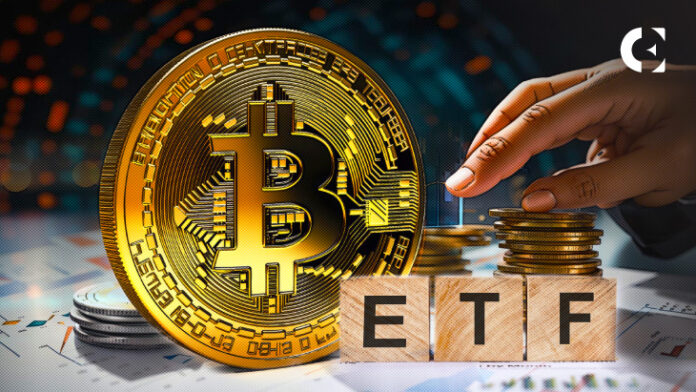The crypto community leaps for joy as the United States Securities and Exchange Commission (SEC) approved spot exchange-traded funds (ETF) for Bitcoin.
Over the years, several asset managers have tendered applications for Bitcoin spot ETF but have failed to succeed. Emphatically, the regulatory body rejected such applications, claiming that Bitcoin ETFs would be vulnerable to market manipulation.
However, on January 10, 2024, the U.S. SEC approved the first-ever Bitcoin spot ETF applications for 11 firms after months of extensive deliberations. These approved applications include submissions from BlackRock, ARK Investments, and Fidelity.
How Will the ETFs Work?
The Bitcoin ETFs would be listed on traditional exchanges NASDAQ, NYSE, and CBOE (Chicago Board Options Exchange), comprising actual Bitcoin purchased from crypto exchanges and those held by custodians like Coinbase Global.
The recently approved products can either track a Bitcoin benchmark or utilize the index provided by CF Benchmarks. Notably, CF Benchmarks is a subsidiary of Kraken that aggregates trading data from various BTC/USD markets operated by top cryptocurrency exchanges.
Bitcoin ETF issuers plan to charge an average of 0.2 to 0.8%, a price below the current ETF market average.
Notably, an overall market surveillance mechanism has been created by NASDAQ and CBOE in collaboration with Coinbase. It was created to protect Bitcoin ETFs against manipulations.
Is Bitcoin ETF Different To Buying Bitcoin Itself?
The essence of a spot Bitcoin ETF is to allow traditional investors to access the first-born crypto while sidelining risks associated with owning the assets in a designated wallet.
Being featured on strictly regulated stock exchanges, ETFs are easily accessible through the existing brokerage accounts of retail investors, all of which are subject to close supervision. Furthermore, the ETF structure enhances the availability of Bitcoin for institutional investors, including those restricted from direct investment in alternative assets.
Moreover, ETFs solve several downsides of the crypto space, including hacks due to poor cybersecurity records, bankruptcies and scandals, and money laundering.
How is it Different From Existing Bitcoin Futures ETFs?
The approved Bitcoin ETF differs from Bitcoin futures ETFs approved by the SEC in 2021. Bitcoin futures ETFs track agreements to buy and sell Bitcoin at a pre-agreed price without tracking the precise price movements.
On the other hand, spot Bitcoin ETF tracks the actual price movements of Bitcoin, hence the name “spot,” as it is based on Bitcoin’s prevailing market value.
Are There Any Bitcoin Spot ETFs Elsewhere?
Besides the United States, Bitcoin spot ETFs are also approved in Canada and Europe. The United States is the world’s largest capital market, hosting top asset managers and institutional investors.
How Much Can A Bitcoin ETF Reel In?
The ProShares Bitcoin Strategy ETF, the first Bitcoin futures ETF approved in 2021, experienced $1 billion worth of shares trading hands on the first day. Experts believe Bitcoin ETF could triple on its first day and shoot up to $55 billion after five years.
What Does SEC Bitcoin Spot ETF Approval Signify?
The approval of the Bitcoin ETF will primarily boost the legitimacy of the cryptocurrency industry. This comes after the SEC and the crypto industry have engaged in a long-term tussle with the unyielding crackdown on crypto firms. This approval could make room for a more favorable regulatory climate in the United States.
Disclaimer: The information presented in this article is for informational and educational purposes only. The article does not constitute financial advice or advice of any kind. Coin Edition is not responsible for any losses incurred as a result of the utilization of content, products, or services mentioned. Readers are advised to exercise caution before taking any action related to the company.










